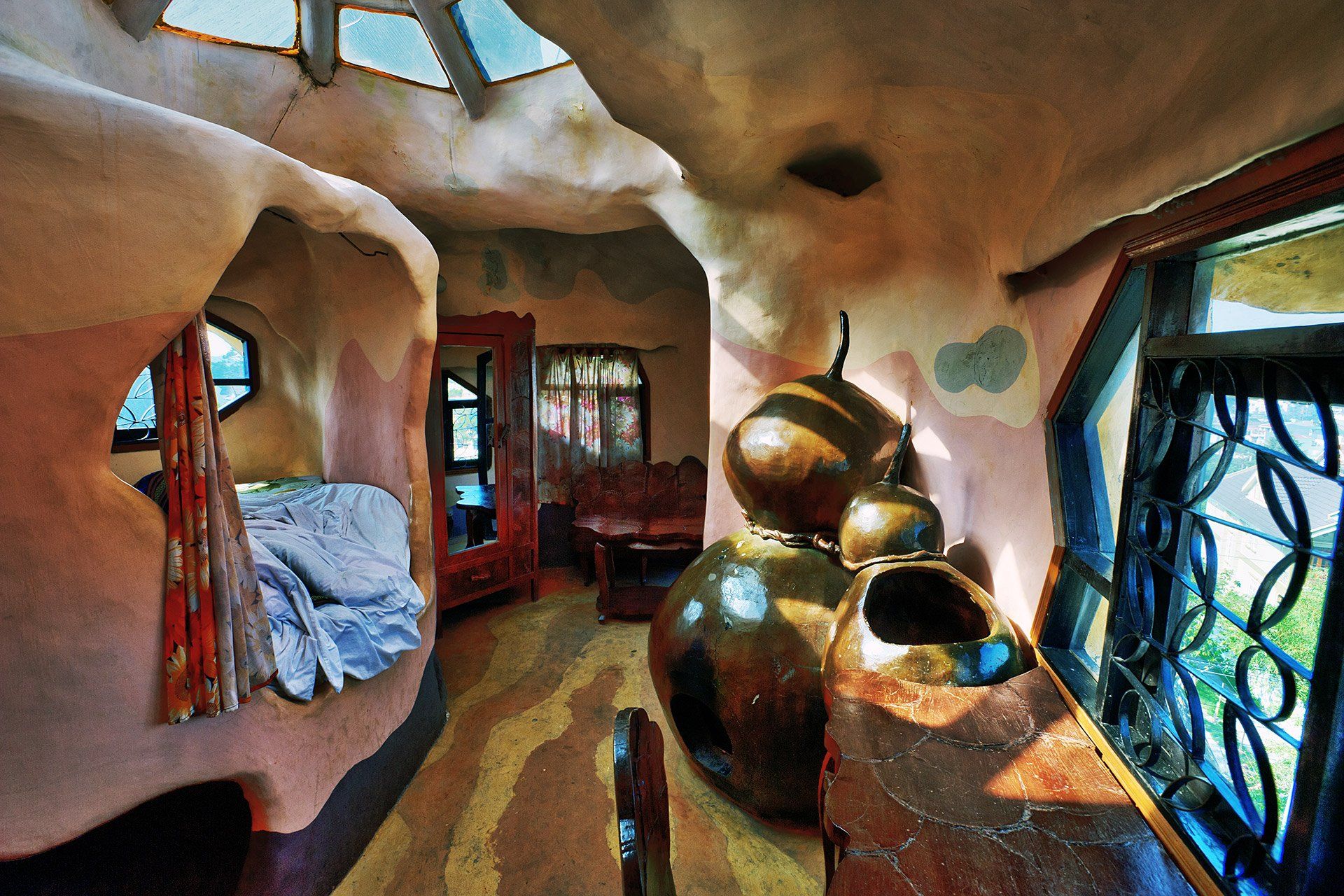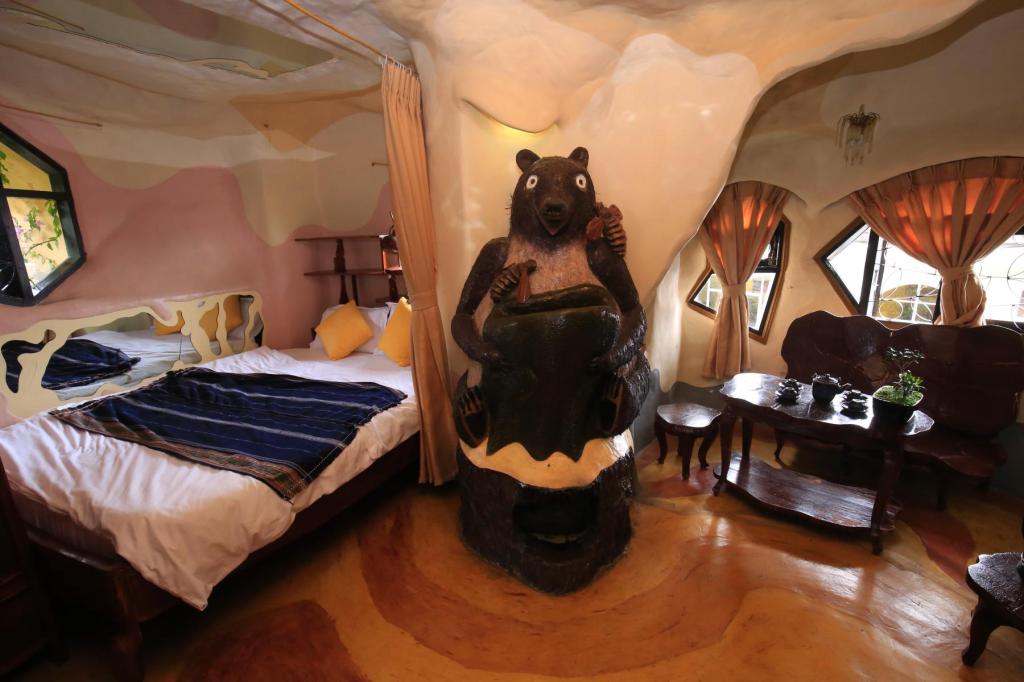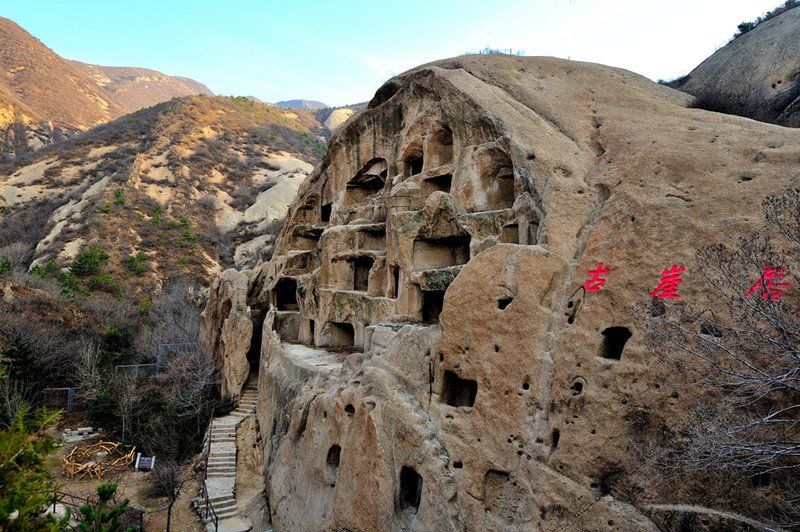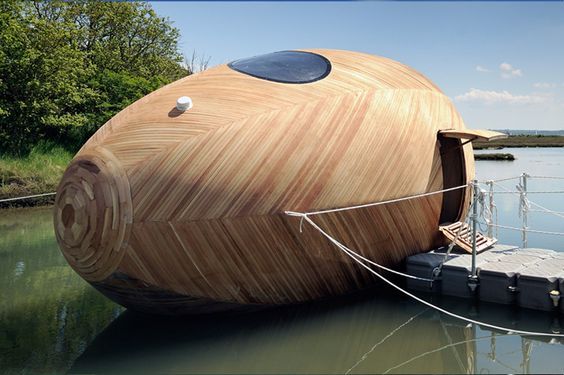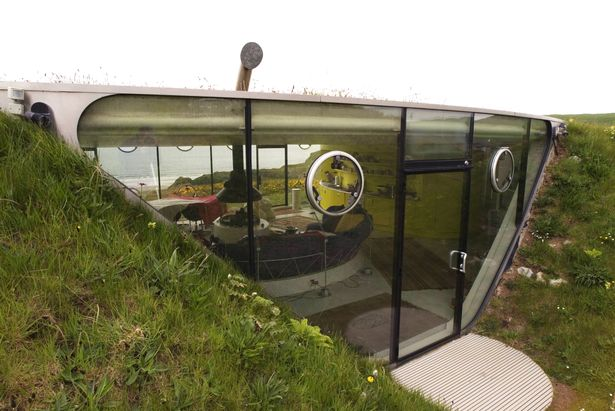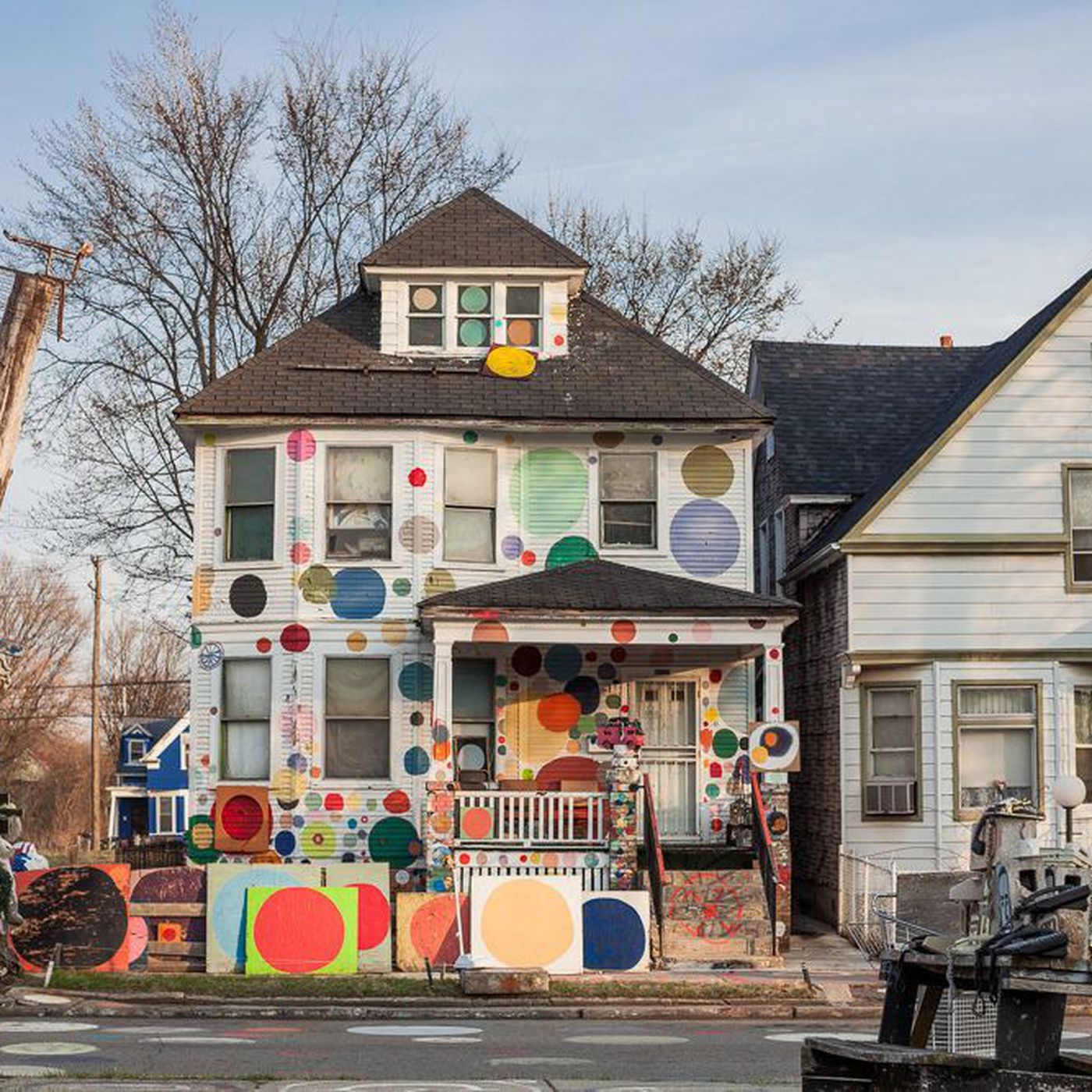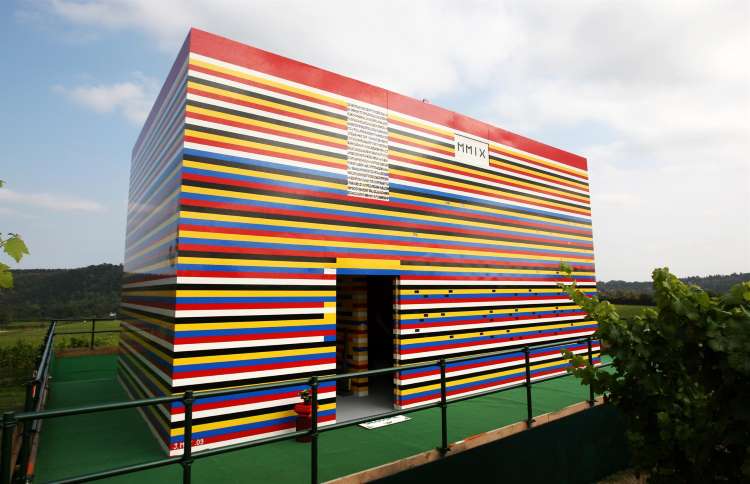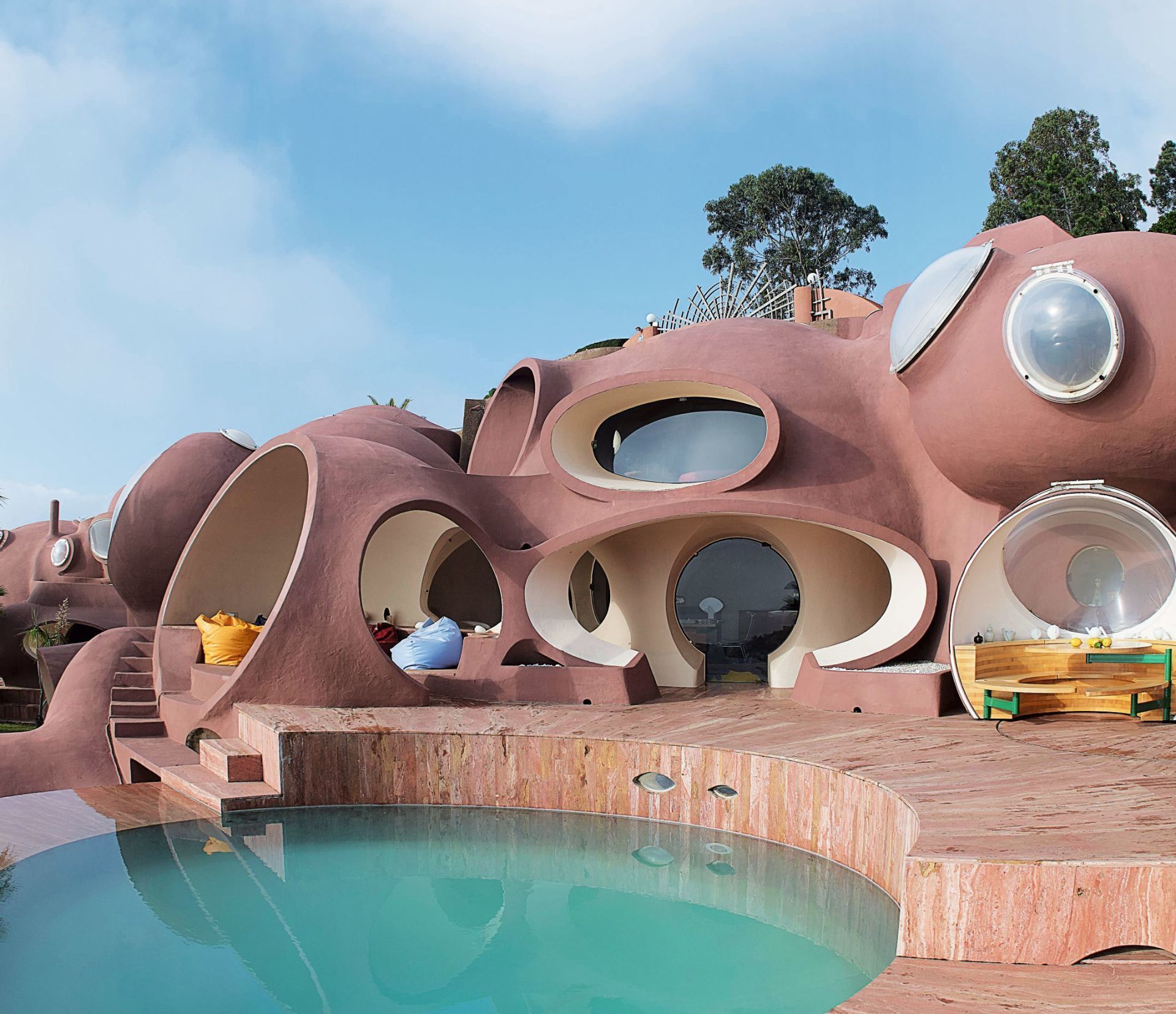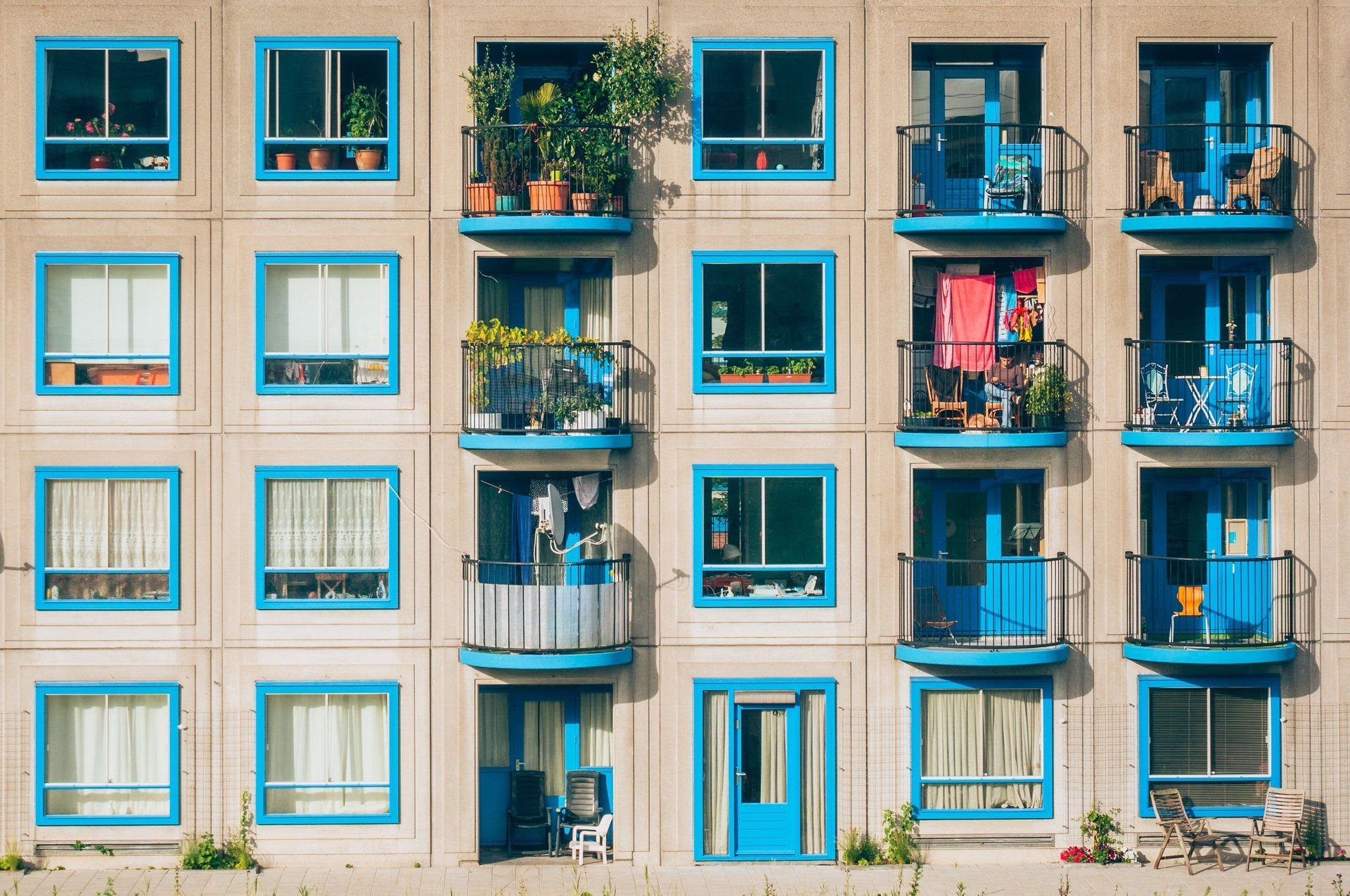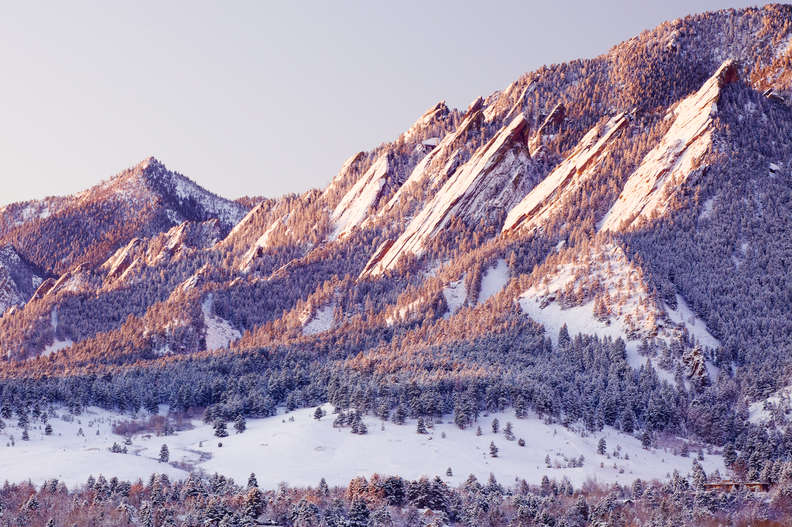Fun Friday! The World's Weirdest Houses
World's Wildest Houses
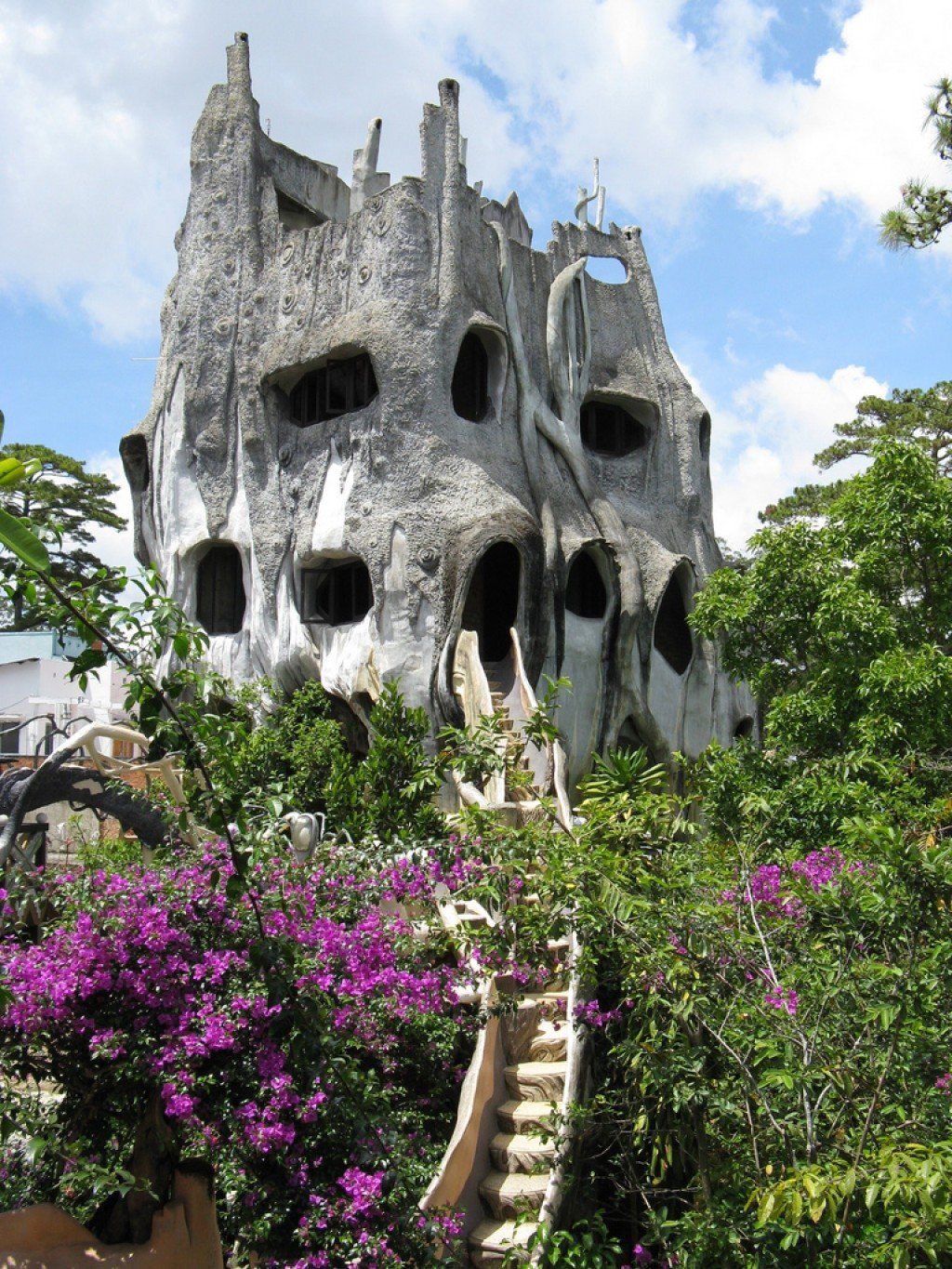
1. Hằng Nga Guesthouse, Dalat, Vietnam
Originally designed by Vietnamese architect Dang Viet Nga, the Hang Nga Guesthouse is also known as the “Dalat Crazy House” by the locals and vaguely resembles a giant tree. With 10 themed guest rooms, the house is open to tourists. It boasts lots of nooks, crannies, twists, turns, bridges, hallways and staircases and is promoted as a fairy tale themed house surrounded by sculptures and gardens. All of the furniture inside the house needed to be handcrafted to fit in with the organic shape of the interior.
2. THE ANCIENT CLIFF HOUSE, GUYAJU, CHINA
Over 110 rooms were carved into the side of a cliff about 92 km northwest of Beijing in the Tang Dynasty. The Xiyi people lived in them and built the communal caves near a natural spring.
The Guyaju Caves are known as the largest cliff residence ever discovered in China and are also known as “the biggest maze of China”. Stone steps and ladders were used to connect the different levels, and inside were found stone hearths, wardrobes, beds and mangers. At the highest level of the communal cave was found a two story stone house, featuring furniture which may have belonged to the leader of the tribe.
3. THE MOBILE AQUATIC POD, EXBURY, ENGLAND
Designed as a studio space and personal experiment in minimal life by artist Stephen Turner, the “Exbury Egg” is a floating home and studio space based on the premise of reevaluating what we traditionally think of as a home. It’s intended to be an installation, moved by boat, but is currently being used by Turner as a year-long home (the artist is documenting his life in the egg as a sort of performance art). Fashioned almost entirely from artfully-wrapped wood, the tiny one-room space will be washed by tides, rains, and winds over time to gain a unique patina, integrating the structure into the visual theme of the marsh area surrounding it. Inside, Turner has a basic shower and cooking devices, as well as a hammock to rest in.
4. MALATOR HOUSE, PEMBROKESHIRE, WALES, UK
Known locally as the Teletubby house, Malator House is built entirely underground, and only the front glass view of the house shows its existence in a hill.
Built in 1998 by Future Systems architects for a Member of Parliament (Bob Marshall-Andrews QC), Malator house showcases how the landscape can be preserved with thoughtful architecture.
From an aerial perspective, the house cannot be seen at all, as the top is completely covered with native grasses and blends perfectly into the scenery.
5. THE URBAN CACTUS, ROTTERDAM, NETHERLANDS
UCX Architects designed this rather amazing apartment building as an example of making the most of alternating patterns to allow more sunlight for outdoor spaces in future community housing. With 98 residential apartments and 19 stories, the unusual design allows each apartment access to sun, both on the garden petal and some of the interior. The project was designed to allow green space with residency near the Vuurplaat Harbour, as well as excellent city views. Construction of the building began in 2006.
6. THE EARTH HOUSE ESTATE, DIETIKON, SWITZERLAND
New PaBuilt around a small artificial lake are nine “Earth Houses” that look like hobbit holes, containing modern apartment-like interiors, each including a modular kitchen and luxury bathroom.
Architect Peter Vetsch designed the houses to blend into the landscape, using the earth as insulation and protection from rain, wind and ice. Entrance to the estate is kept private. Due to the success of Earth Houses, Vetsch Architecture is creating and building many more such mini communities in Switzerland and Germany, using similar techniques.
7. HEIDELBERG PROJECT, DETROIT, USA
The Heidelberg Project is a community organisation encouraging locals to use art and creativity to make beautiful installations in the streets of rundown suburbs in Detroit.
The Project has been running since 1986 and amazing houses and street decorations have been built out of up-cycled materials.
Previously, where modern ruins and abandoned houses stood in a two block area, there is now color and interest.
The founder of the Heidelberg Project, Tyree Guyton, loves up-cycling discarded objects and wants to educate people about community through art.
The interesting artworks have resulted in over 275,000 tourists visiting the Project annually, spawning new jobs for the city and hope for the artists who are busily making a difference transforming their lives.
8. LEGO HOUSE, SURREY, UK
Built with over 3,300,000 lego bricks, the Lego House is the creation of James May, who always wanted a house made of lego.
With a working toilet, a hot shower, staircase and bed, all made with lego bricks, this two story Lego House was built by volunteers and attracted a lot of international attention. Unfortunately, the house was demolished in 2009 as it crowded prime grape real estate in the local area. James plans on building a life sized lego ship for his next project.
9. THE CLOUD HOUSE, MELBOURNE, AUSTRALIA
Australian architecture firm McBride Charles Ryan created the cloud house as an extension on a century-old Edwardian home. The aim was to add a modern touch and stir interest in the property, making it into a local landmark again.
Visitors walk through a traditional Edwardian interior and emerge into the ultra-modern extension, which features a red kitchen with box inspiration and lots of curved wood in the cloud shaped facade, overlooking the pool.
10. PIERRE CARDIN’S “BUBBLE HOUSE”, THÉOULE-SUR-MER, FRANCE
This bubble-shaped villa was designed in the 1970s by architect Antti Lovag, who sought to include natural, flowing elements into the design and was inspired by the flowing shape of ancestral caves and troglodyte habitats.
Overlooking the Mediterranean Sea, Palais Bulles features an open air amphitheatre, a reception hall which accommodates 350 seated people and a garden, pool and ponds on 8,500 sq/ft . There are even round beds to match.
Designer Pierre Cardin bought this 28 bedroom home in 1989, ironically having designed his iconic bubble dress 30 years earlier. It has often been used as a location for editorial fashion photography and film festival parties. Antti Lovag is still designing unusual houses at 90 years of age.
What House would you like to live in? Share with your friends and see where you would live in the world!
(I personally like #10)
Share this post

Are you currently a parent during this Pandemic and looking for some peace of mind and productivity during this time where school time is virtual or with limited hours? Private offices and the emergence of “learning pods” could be the perfect combination to provide a solution for your productivity and your child’s learning when schools are partially open this school year.

Renting your own office space may be the solution to your next business year! There has been much improvement in technology and harsher regulations for social distancing have been implemented in 2020. These factors are what you might want to consider when renting a private office space for yourself. This is a great place for your children to study or do part time school work in for the following year ahead! When you rent an individual office spaces you feel encouraged to network and have beneficial encounters. You will feel excited about going to work, having a space to grow and expand your business and knowledge! These office spaces can be used as "study pods" those who have to attend school ‘remotely’. This gives students and family to safe a space where they can study and focus outside of the house! Here are 6 reasons why you should consider renting an individual office space. 1. Face-to-face- meetings : Sometimes you can’t get away without meeting your clients in person. If you need a place for meetings, showrooms, or design areas where you can meet your clients face to face in a comfortable and professional space. This also will prevent the spread of germs into your home! You can keep business and your house separate.


